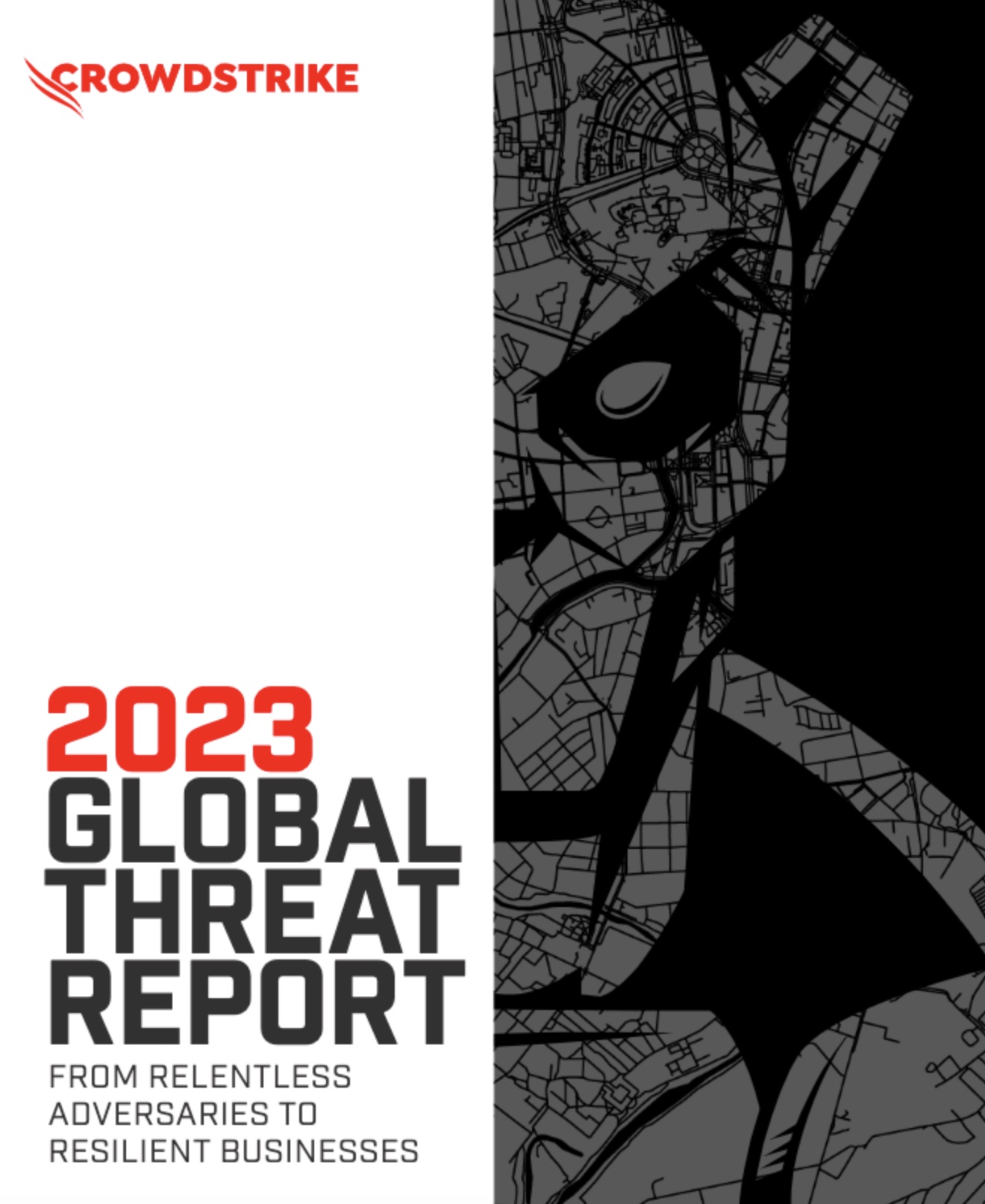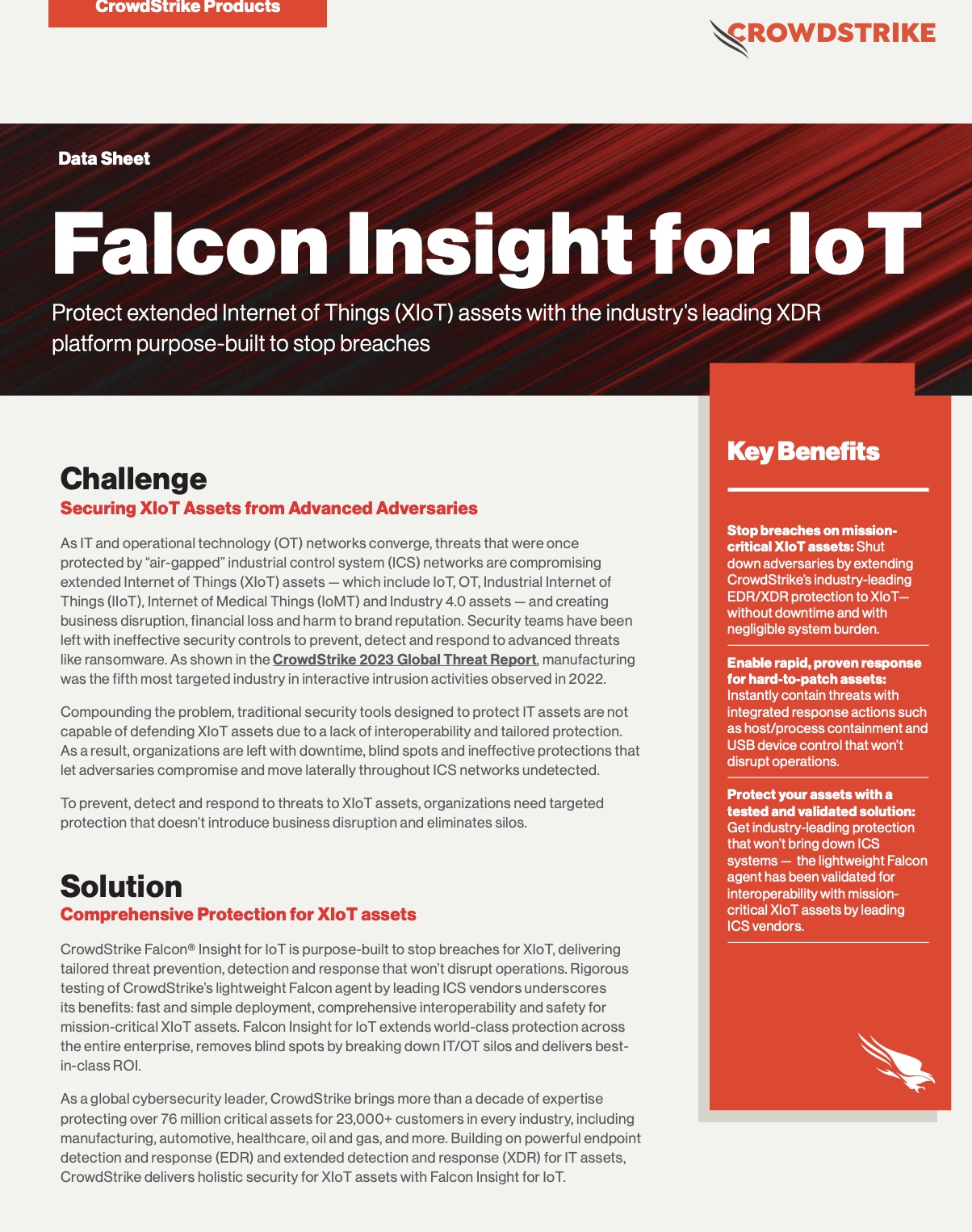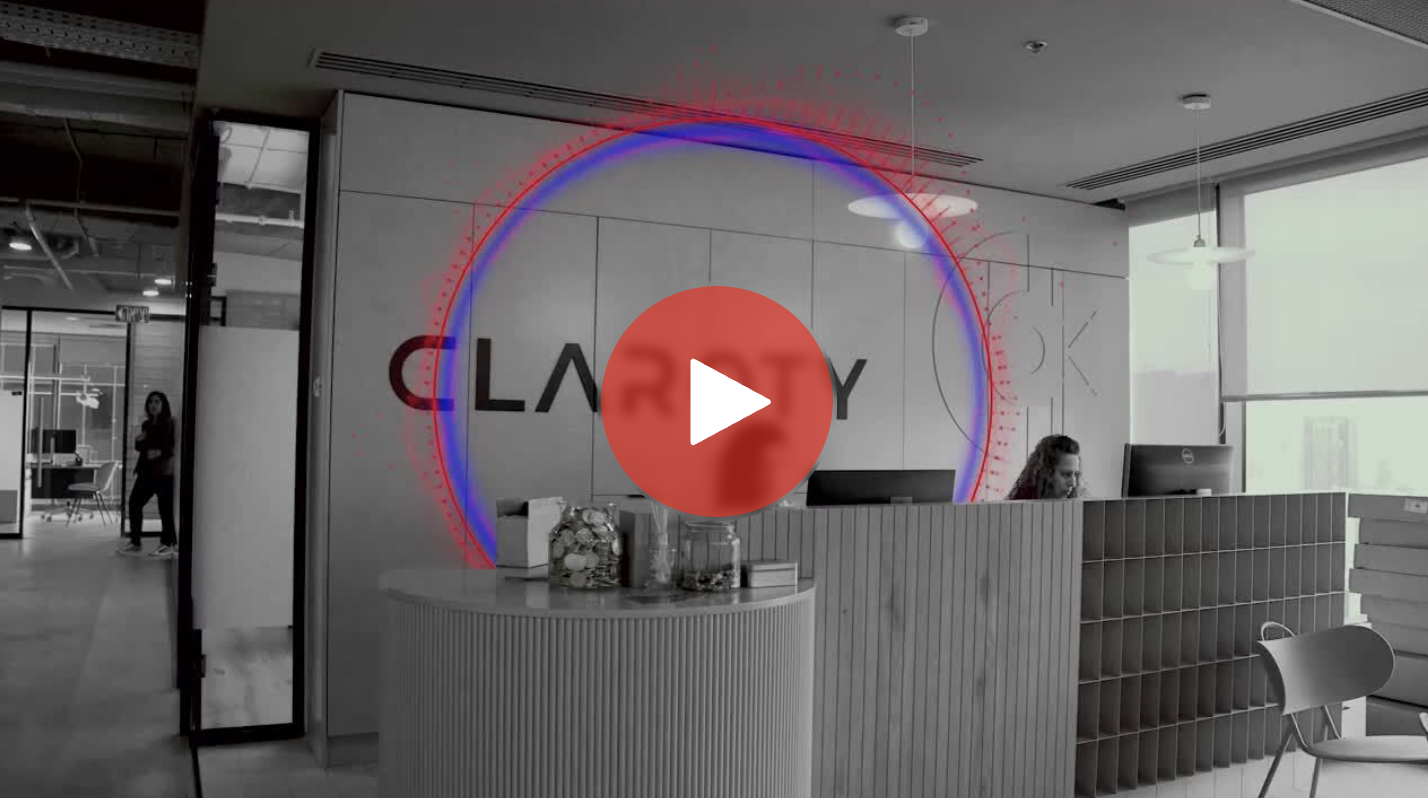What is the extended internet of things (XIoT)?
The extended internet of things (XIoT) is an umbrella term that includes all internet of things (IoT) or physical devices connected to the internet. It encompasses IoT, operational technology (OT), internet of medical things (IoMT), industrial IoT (IIoT), and supervisory control and data acquisition (SCADA).
Everyday objects like intelligent cars, home appliances, and wearable fitness trackers are just a few examples of items being connected to the web as part of the internet of things.
On the business front, the incorporation of interconnected devices and equipment within organizations holds the promise of ushering in a “fourth industrial revolution.” Indeed, more than 80% of executives across industries say IoT is critical to some or all of their lines of business.
Here’s everything you need to know to grasp the concept of IoT in our increasingly connected world.
Internet of things definition
The internet of things refers to the network of interconnected physical objects — devices, vehicles, appliances, and other physical gadgets — that are equipped with sensors, software, and network connectivity, enabling them to collect and exchange data. Thanks to the collection of relevant data, IoT devices can interact with their environment and learn from one another.
These “smart objects” span all walks of life, from “smart home” intelligent thermostats, smartphones, and laptops to complex industrial machinery and transportation networks. Many governments are even envisioning entire “smart cities” that will cover large-scale IoT applications. The ultimate goal of IoT is to enhance efficiency, improve decision-making and create new opportunities by seamlessly integrating the digital and physical worlds.

2023 CrowdStrike Global Threat Report
The 2023 Global Threat Report highlights some of the most prolific and advanced cyber threat actors around the world. These include nation-state, eCrime and hacktivist adversaries. Read about the most advanced and dangerous cybercriminals out there.
Download NowXIoT device examples
XIoT devices are all around us — at home and in our businesses.
Here are some examples of XIoT devices:
OT
- Programmable Logic Controllers (PLCs)
- Human Machine Interface (HMI)
- Engineering Workstations (EWS)
- SCADA
IoT
- Lighting
- Cameras
- Biometric Scanners
Building Management Systems
- Elevators
- HVAC
- Smart Grid Systems
IIoT
- Sensors
- Pumps
- Robotics
IoMT
- CT Scanner
- Blood Gas Analyzer
- Hematology Analyzer
- Anesthesia Machine
How XIoT works
XIoT operates through a combination of four components that interoperate to make up a cohesive XIoT system:
- Devices/sensors: Devices are equipped with sensors that collect diverse types of data, such as temperature, location, motion, and more.
- Connectivity: All this collected data is sent to the cloud, and to get there, it needs connectivity. XIoT devices use a wide range of connectivity options, such as Wi-Fi, Bluetooth, cellular, satellite, ethernet, and low-power wide area networks (LPWANs).
- Data processing: The wealth of collected data is valuable in providing meaningful insights. Once the data gets to the cloud, advanced algorithms and machine learning are applied to extract this information.
- User interface: These data insights are made available to the user to help them inform decision-making. It might be delivered via a notification like a text alert, or a user could have an interface via an XIoT application that allows them to proactively access the data.
Benefits and importance of XIoT
XIoT has become a trendsetter and new economic driver for many modern businesses. XIoT initiatives are delivering real-world business benefits, and their positive impact is expected to grow in the years ahead. For example, 46% of organizations report experiencing efficiency gains from XIoT devices. Here’s a look at some of the top XIoT business benefits:
Improved efficiency
XIoT facilitates process automation, which minimizes the need for human intervention and the likelihood of errors. In addition, XIoT solutions provide real-time insight from every corner of the organization, whether you’re automating inventory, supply chain, or service delivery. This empowers organizations to monitor, control, and optimize operations and improve efficiencies throughout business workflows.
Data-driven decision-making
XIoT-generated data provides organizations with valuable insights into key operational metrics, product performance, customer satisfaction, and more. It also makes it easier for teams to collaborate, as they can work from the same shared data sets. Additionally, it enables them to analyze data more quickly than ever before. This data-driven approach enables informed decision-making that can lead to better strategies and outcomes.
Cost savings
The opportunities are endless for organizations to experience cost savings from their XIoT initiatives. For example, by streamlining operations and minimizing wastage, XIoT can result in significant cost savings. Proactive maintenance also helps organizations anticipate equipment failures so they can predict when upkeep is needed, which reduces downtime and prevents costly repairs.
On the asset management side of the business, XIoT can empower businesses with reliable real-time inventory data, allowing them to avoid overstocking or stockouts. This drives improvements in sales due to the availability of products and helps minimize carrying costs.
Cost savings is the main revenue driver for 54% of business IoT projects.
Better customer experience
XIoT enables personalized and responsive customer experiences. Smart devices like wearable health monitors can provide users with real-time insights, enhancing their engagement and satisfaction. In retail, XIoT devices can enhance the buying experience by providing personalized recommendations and optimizing store layouts based on customer behavior. This can lead to increased sales and improved customer satisfaction.
Enhanced employee productivity
XIoT helps organizations streamline and simplify processes, freeing up employees to focus on higher-value activities. In process-heavy business environments, XIoT-enabled equipment can track production processes, identify bottlenecks, and optimize workflows, which helps improve employee efficiency and reduces idle downtime stemming from process interruptions.
Integrated business models
In the context of XIoT, new integrated business models entail the seamless convergence of products, services, data, and digital platforms that empower the organization to provide holistic solutions to market demands and customer needs. Instead of offering stand-alone products, businesses can create ecosystems where interconnected devices and services collaborate to deliver enhanced value. This shift is driven by the understanding that customers seek not just products but the outcomes these products can deliver.

Falcon Insight for IoT Data Sheet
Download this data sheet to learn how Falcon Insight for IoT extends world-class protection across the entire enterprise, removes blind spots by breaking down IT/OT silos and delivers best-in-class ROI.
Download NowTechnologies that make XIoT possible
XIoT relies on a wide range of technologies that come together to make XIoT systems possible. The primary XIoT-enabling technologies include:
- Wireless sensor networks: These networks wirelessly connect a collection of devices with sensors, enabling them to seamlessly collect and share data.
- Cloud computing: The cloud serves as the central hub where the amassed data is stored, processed, and analyzed, providing scalable and powerful computing resources.
- Communication protocols: These protocols establish the rules and language for devices to communicate effectively, ensuring smooth data exchange across the XIoT ecosystem.
- Embedded systems: At the heart of XIoT devices, embedded systems efficiently control and manage the devices’ functions, enabling them to interact with the physical world.
XIoT use cases
XIoT is transforming industries by leveraging data and connectivity to improve processes, enhance user experiences, and enable more efficient resource management. Here’s a look at five industries that have been revolutionized by XIoT:
Healthcare
XIoT has made a significant impact in the healthcare industry through wearable health devices that continuously monitor vital signs. Healthcare professionals can remotely monitor this data, set up alerts for critical readings, and intervene promptly if there are any anomalies or concerns. This XIoT-enabled model of constant monitoring improves patient outcomes with early detection of potential health issues, preventing complications and reducing the need for frequent in-person appointments.
- Example: Wearable health monitors
XIoT-enabled wearable devices like fitness trackers and smartwatches continuously monitor vital signs such as heart rate, blood pressure, and sleep patterns. This data is transmitted to healthcare professionals and caregivers, enabling them to proactively initiate follow-ups when there are abnormal readings.
Manufacturing
XIoT in manufacturing, often referred to as the industrial internet of things, has introduced significant advancements to the industry, improving the way organizations manufacture goods, sell to customers, and follow up with support. XIoT enables the creation of “smart factories,” where machines, equipment, and processes are interconnected and communicate seamlessly.
- Example: Predictive maintenance in factories
XIoT sensors embedded in machinery and production lines collect real-time data on factors like temperature, humidity, pressure, vibration, and production rates. This data is transmitted to a central system where it’s analyzed to optimize manufacturing operations and detect anomalies or potential issues.
Agriculture
XIoT devices in “smart farming” like equipment sensors and drones offer real-time insights into crop conditions. This data helps farmers make informed decisions about irrigation, pest control, and harvesting times, leading to higher crop production and profitability.
- Example: Precision agriculture
Soil moisture sensors, weather stations, and temperature readings are used in precision agriculture. Farmers can collect real-time data on soil conditions, weather patterns, and crop health. By analyzing this data, they can optimize irrigation schedules, apply fertilizers more efficiently, and detect early signs of disease or pests.
Transportation
Connected vehicles equipped with XIoT sensors and GPS enhance safety, navigation, and traffic management, and current predictions anticipate that around 88% of new vehicles will involve IoT telematics by 2025. XIoT ensures business benefits like increased driver safety, better environmental conditions, real-time vehicle monitoring, and an improved travel experience.
- Example: Connected vehicles and traffic management
XIoT-equipped vehicles can communicate with each other and with transportation infrastructure, such as traffic lights and road sensors. This allows for real-time traffic updates and optimized routing. In addition, XIoT sensors in vehicles can monitor factors like tire pressure and engine performance, alerting drivers and maintenance teams to potential issues before they escalate.
Retail
Whether buying online or in a physical store, consumers expect shopping to be easy, simple, and enjoyable, and smart store technologies are transforming the retail market to improve the customer experience. Smart retail stores support the customer shopping journey and purchase process by integrating a variety of smart technologies — such as QR codes, smart shelves, virtual shopping carts, mobile payments, and self-service checkout — throughout the shopping experience.
- Example: Personalized shopping
Retailers can use XIoT-powered beacons placed around stores to send personalized offers and notifications to shoppers’ smartphones based on their location within the store. This enhances the shopping experience by providing relevant discounts and product information. Retailers can also track customer movements and behavior to optimize store layouts and product placements.
In 2023, 80% of retailers will adopt XIoT technologies to track customer preferences, optimize inventory management, and offer location-based promotions.

Case Study: Claroty
Learn how Claroty partners with CrowdStrike to secure IT/OT devices using CrowdStrike Falcon® Discover for IoT.
Watch NowXIoT challenges
For all of XIoT’s advantages, there are potential negative impacts that businesses can face if XIoT deployments are not carefully planned and managed. From security breaches endangering operations and customer trust to data overload impeding decision-making, it’s important for organizations to understand and address these risks to realize the full potential of XIoT.
Security and privacy risks
For organizations, the proliferation of XIoT devices and enabling technologies introduces significant security and privacy risks. Indeed, with 1.5 billion cyberattacks per year focused solely on XIoT devices, security remains a top concern.6
When adopting XIoT ecosystems, organizations must navigate the risks of vulnerabilities stemming from inadequate device security measures, which can open the door for attackers to gain unauthorized access. The interconnected nature of XIoT devices also expands an organization’s attack surface, enabling malicious actors to exploit one compromised device as a foothold to infiltrate the entire network.
In addition, XIoT devices that collect vast amounts of sensitive data are attractive targets for bad actors. This increases the risk of privacy breaches as well as unauthorized data sharing, potentially leading to data loss, regulatory noncompliance, and damage to the organization’s brand and value in the market.
Expert Tip
It’s important to treat IoT-connected devices with the same level of security as you would a traditional endpoint, such as a computer or smartphone. Learn more about the best practices for IoT security. IoT security
Disconnect in operations on teams using different standards
XIoT involves diverse devices and platforms. Because of the lacking protocol and communication standards, this can create a disconnect and lead to incompatibility issues for organizations when teams build out their own XIoT initiatives.
Devices from different manufacturers don’t always seamlessly work together, which can complicate the interoperability and data sharing between devices. Without a cohesive IoT ecosystem, organizations can get stuck working in data silos with limited analytics. This stops organizations from obtaining a holistic picture. For example, in a smart manufacturing setup, machines that don’t work well together might hurt the company’s ability to optimize production in real time.
Data overload
According to IDC projections, there will be 42 billion connected XIoT devices by 2025, which will generate 79.4 zettabytes of data. Considering this, it’s easy to grasp how the sheer volume of XIoT-generated data can exponentially increase an organization’s data storage. This data overload can also overwhelm an organization’s processing capabilities and reduce network bandwidth.
Without effective strategies for data management and analysis, businesses risk missing valuable insights buried within the data noise. This overload can also lead to delays in decision-making, an inability to respond to real-time events, and significant increases in data storage costs.
Regulatory and legal challenges
Data collection, storage, and usage from XIoT devices raise a slew of legal and regulatory issues. Privacy laws, such as the General Data Protection Regulation (GDPR), establish tight guidelines for data gathering and user permission, and noncompliance can result in significant penalties.
Organizations in regulated industries must consider if XIoT data sharing and processing conflicts with regulations governing data ownership and consent. Additionally, in case of XIoT-related accidents or failures, disputes over data ownership and responsibility can arise, which can lead to costly legal disputes. All of these scenarios raise the compliance bar for IoT deployment.
The future of IoT
The future of IoT holds exciting possibilities. With the continued adoption of 5G networks, IoT devices will experience faster and more reliable connectivity. Edge computing will enable real-time data processing at the device level, reducing latency (especially in rural areas) and enhancing response times.
The potential for IoT doesn’t just come from connecting billions of devices but from using vast amounts of valuable data to automate various business processes. As IoT becomes more ingrained in an organization’s operations, addressing security and privacy challenges and ensuring responsible deployment will be key to unlocking its full potential.
CrowdStrike’s approach to IoT and XIoT
As IT and OT networks converge, threats that were once protected by “air-gapped” industrial control system (ICS) networks are compromising XIoT assets. Safeguarding your IoT infrastructure starts with gaining an understanding of your assets. With insights in 10 minutes or less, CrowdStrike Falcon® Discover for IoT provides the industry’s fastest time to complete XIoT visibility with zero infrastructure to deploy or operate.
Additionally, with CrowdStrike Falcon® Insight for IoT, organizations gain a purpose-built solution to stop breaches for XIoT, delivering tailored threat prevention, detection, and response that won’t disrupt operations. Falcon Insight for IoT extends world-class protection across the entire organization, removes blind spots by breaking down IT/OT silos, and delivers best-in-class return on investment (ROI).


